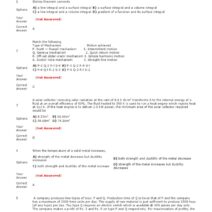Climate-controlled storage has surged in popularity as individuals seek secure environments for their belongings. But is it truly worth your investment? What factors should you consider when deciding between traditional and climate-controlled units? These questions beckon deeper exploration into the intricacies of storage solutions in the context of environmental concerns, practicality, and costs.
First, let’s dissect what climate-controlled storage actually entails. Such units maintain a consistent temperature and humidity level, usually kept between 55°F and 85°F, and humidity levels that remain below 50%. This meticulous environment is particularly advantageous for items that can be adversely affected by extreme temperatures or fluctuating humidity, such as wooden furniture, electronics, and important documents. But how often do you truly need this level of care?
Consider the type of items you wish to store. If you are housing delicate antiques, fine art, or sensitive records that could deteriorate under stress, the investment may indeed be warranted. Conversely, for miscellaneous household items or garage clutter that can withstand the elements, a traditional storage unit may suffice. This raises an intriguing challenge: can you accurately assess the needs of your stored belongings before making a hasty financial commitment?
Furthermore, let’s discuss costs. Climate-controlled storage units typically command a higher price than standard facilities. The reasons for this disparity include operating expenses associated with climate control technology and enhanced security features, often integral to these facilities. Depending on location, prices can range significantly—sometimes by as much as 50% higher than non-climate-controlled units. Will your valuable items justify this premium? Or is the price tag too steep for the peace of mind provided?
Cost analysis shouldn’t stop at the monthly rental fee. It’s crucial to contemplate potential long-term expenses. For instance, if you decide that climate control is unnecessary and select a standard unit, what are the risks associated with exposure to harsh weather? Damaged items could lead to replacement costs far exceeding the typical storage fees. In essence, you need to weigh the financial implications of potential loss against the upfront investment in climate-controlled storage.
Now, let’s pivot to the environmental aspects. Running climate-controlled units requires substantial energy. This raises inevitable inquiries about sustainability. Could choosing a climate-controlled unit inadvertently be contributing to environmental degradation through increased energy consumption? After all, climate change remains a pressing global issue—we must be mindful of our collective carbon footprint. Owners of climate-controlled facilities often rely on sophisticated heating and cooling systems, raising a critical question: are there eco-friendlier alternatives for storage that do not compromise the protection of valuable items?
One avenue worth exploring involves renewable energy initiatives. Some facilities are beginning to harness solar energies or other sustainable resources. When selecting a storage unit, inquire about their energy practices. Are they committed to reducing environmental impact? Supporting green initiatives not only benefits your stored items but also promotes a planet-friendly approach to storage needs.
In addition to energy use, consider the materials involved in the construction of storage facilities. Modern climate-controlled units may incorporate energy-efficient designs and innovative insulation techniques to minimize energy expenditure. Understanding the operational efficiency of a facility can illuminate whether your choice aligns with sustainability goals.
Moreover, another vital component that cannot be overlooked is pest control. High temperatures and humidity levels can create a breeding ground for mold, mildew, and pests. Interestingly, the rigorous climate control functions as a deterrent against these unwanted intruders, safeguarding your items against potential infestation. Could it be that climate-controlled storage protects not only your items but contributes positively to the environment by minimizing waste from damaged goods?
As you mull over the myriad details, also take into account the location of the storage facility. Local climate may play a pivotal role in your decision-making process. Individuals in humid or incredibly cold regions might find climate-controlled units more beneficial compared to those residing in temperate areas. Is it insightful to acquire extra insight into the regional climate? Understanding your local environment will empower you to make a more informed choice about whether a climate-controlled unit is essential.
Ultimately, the decision hinges on a nuanced assessment of your belongings, financial considerations, environmental impact, and specific needs based on your locale. What might seem an extravagant expenditure for climate-controlled storage can sometimes be a prudent choice in the long haul. Assessing the value versus costs, implications on belongings, and overall ethical considerations offers a clearer perspective.
So, is climate-controlled storage worth it? In evaluating countless variables—from the sensitivity of your items to the implications of energy consumption and pest control—one might lean toward a cautious yes, provided the conditions align with personal and environmental values. Consider approaching the decision not merely as a choice about storage, but as part of a larger conversation regarding sustainability, conservation, and stewardship of belongings in our ever-evolving climate-conscious world.






